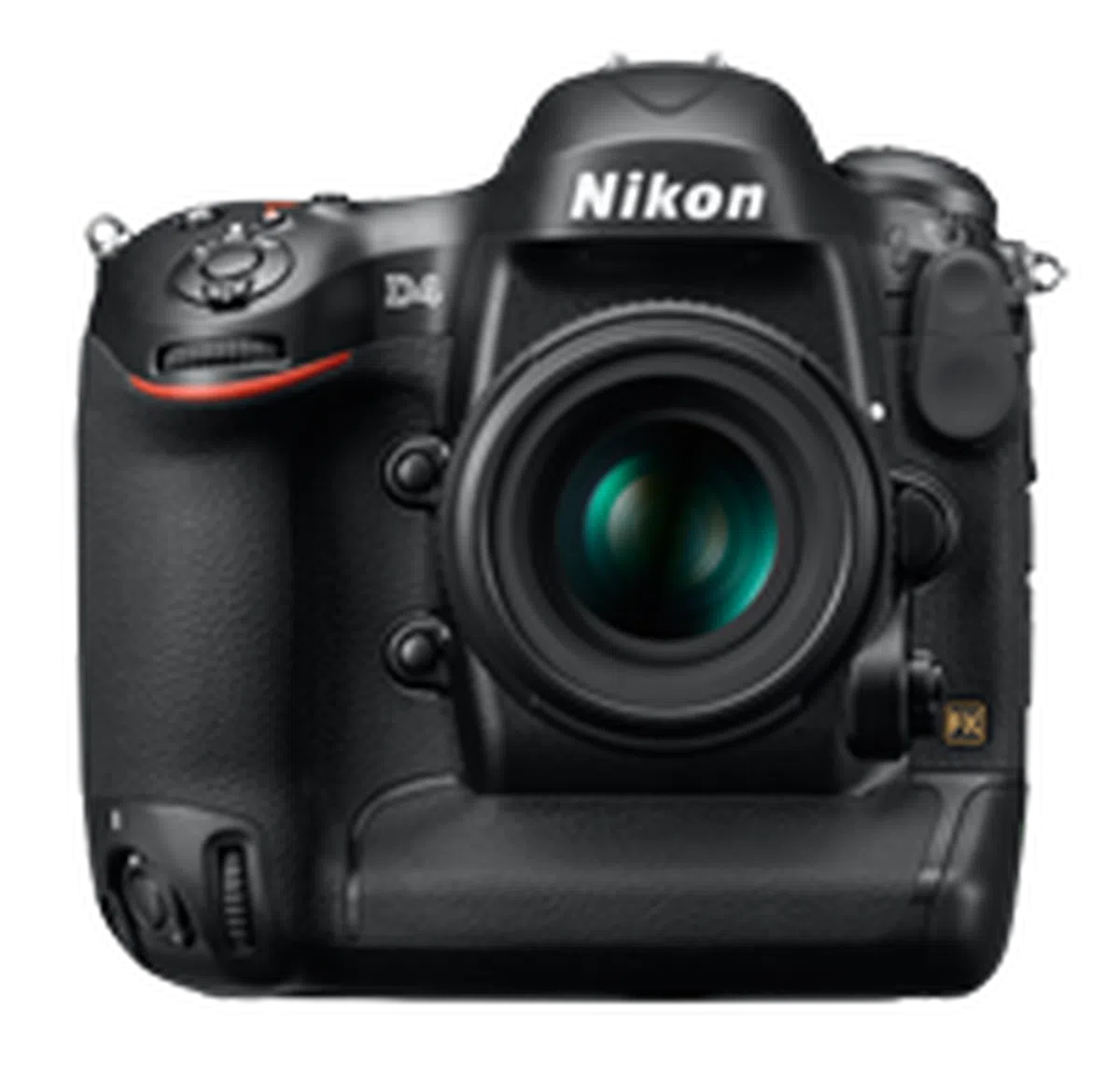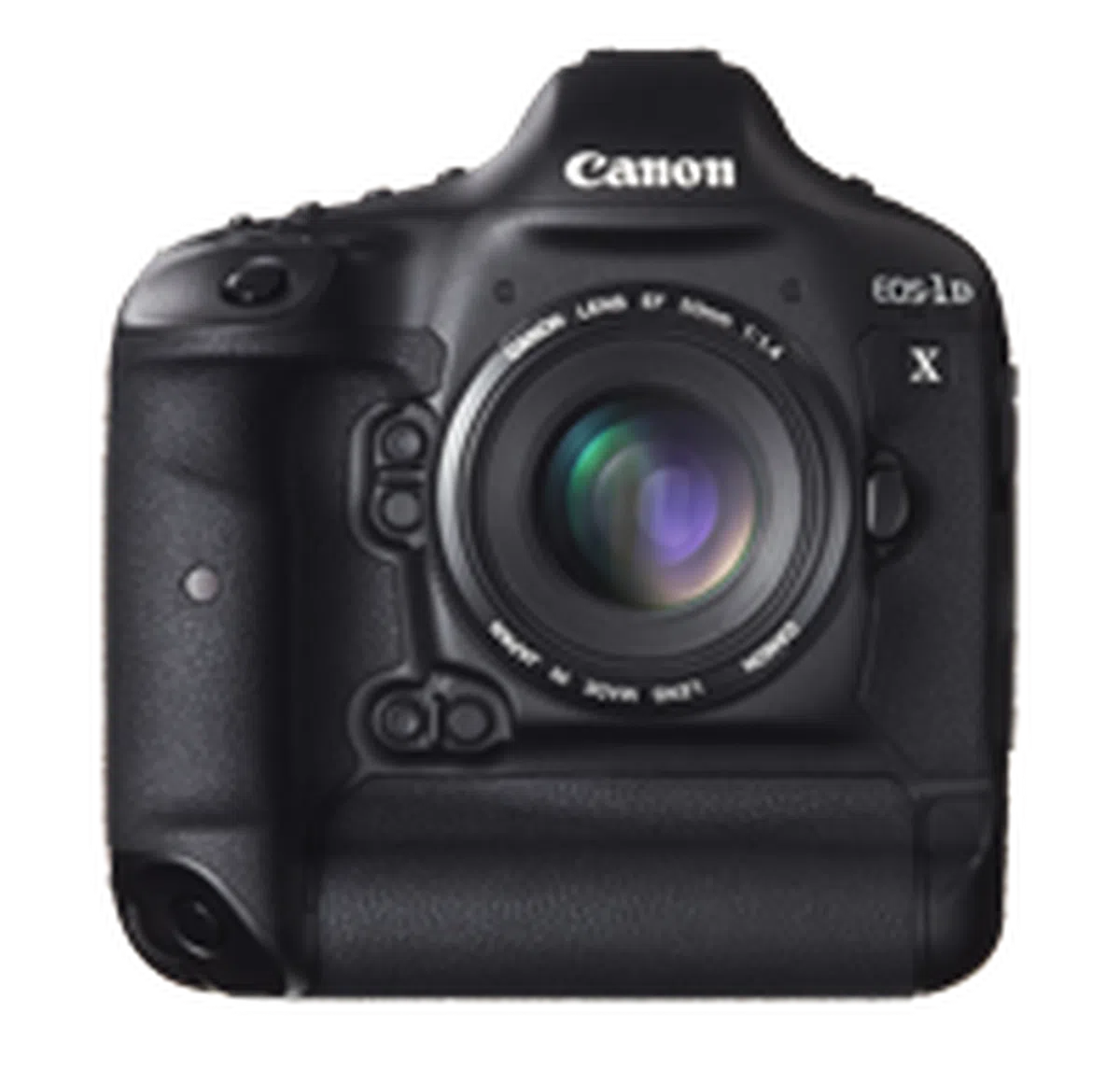Nikon D4 - The Low-Light Action Master
The D4 is Nikon's new flagship DSLR camera, and represents the highest evolution of Nikon's speed and ISO technology. We go in-depth with the camera to review what's new, and what's been improved, in what is easily one of the best digital cameras in the world today.
By HardwareZone Team -

Introduction
It's wildly exciting to hold and use one of the best DSLR cameras in the world. The D4 is Nikon's latest flagship, the fastest camera in Nikon's stable and the one with the best ability to see in the dark. This camera is tough, weather-sealed, and will be able to go anywhere with you and shoot anything you aim it at. Before we go on with the review however, let's do a quick recap on what's new.
The Nikon D-series
The D-series is Nikon’s flagship series of professional DSLR cameras. When it was released in 2007, the Nikon D3 changed the landscape of digital photography with its remarkable ability to shoot at high ISO levels and produce low noise images. The D3S upped the game even further in 2009, becoming the camera that many said "could see in the dark". So it's understandable to see expectations riding high on the D4, the next generation camera in Nikon's D-series of low-light champions.
The D4 is designed specifically for sports, news, wildlife and event photographers who need to shoot in low-light and at fast speeds. It presents an evolutionary, rather than revolutionary step forward from the D3S. Image resolution has been increased to 16MP from 12MP, frame-rate has been slightly increased from nine frames per second to ten (with continuous AF/AE). If AF/AE is locked to the first frame, the D4 can shoot up to eleven frames per second.
Faster & Brighter
To handle the higher resolution and faster frame-rate, the D4's buffer capacity has been increased. The D4 can shoot up to 100 frames in RAW and up to 200 frames in JPEG (using the Sony XQD memory cards), whereas the D3S could manage up to 48 frames in RAW and up to 130 frames in JPEG. The D4's native ISO runs from ISO100 to ISO12,800, but it can be expanded further than the D3S – the D3S could be expanded down to ISO100, and up to ISO102,400. The D4's ISO range can be expanded down to ISO50, and up to ISO204,800.
A new 91K-pixel RGB sensor is able to recognize human faces even when images are framed using the optical viewfinder, and also promises to bring improvements to AF, AE, i-TTL flash control and auto white balance accuracy. The AF has also been improved with the ability to detect and target focus on human faces, and the new 3D color matrix metering III system will determine exposure considering faces. In addition, 11 focus points are fully functional when lenses with a maximum aperture of f/8 are used. The AF's ability to focus in the dark has also been increased and is now sensitive to -2EV.
Now Shoots Full-HD Video
The biggest changes are in the D4's video shooting capabilities. From 720p video on the D3S, the D4 now shoots Full-HD 1080p at 30/25/24p frame-rates in H.264/MPEG-4 AVC format at up to 24Mbps. Faster 60/50p frame-rates are available at 1280 x 720. Sound capture has also been enhanced with a built-in stereo microphone connector, as well as an external headphone connector to monitor audio recording, and microphone sensitivity can be controlled in 20 incremental steps. Professionals can also stream uncompressed video and audio signals out of the camera via HDMI to an external monitor or recording device.
Design & Handling

The D4 body gains more curves than the D3S, but remains a muscular looking camera. The top plate arches into the hood more gracefully, and the red triangle below the shutter button has been streamlined into a single line. The camera has a good grip and heft, sitting comfortably in the hands. The shutter release button now sits at a lower angle and rests on a convex instead of a concave surface, which feels more comfortable. Even though its dimensions are roughly the same as the D3S, it's a little lighter with 60g shaved off. Portrait grip is more comfortable and useful, thanks to some changes made in button placement (more on that below).
The buttons on the D4 can now light up, as well as the LCD screens. It's a big help for photographers shooting in dark environments and it's an improvement so obvious we wonder why nobody has thought of it before. To turn on the lights, push the On/Off switch pass 'On'.
The D4 gains the focus-mode selector lever first seen on the D7000. The lever switches between auto and manual focus, while the unmarked button on top of the lever lets you switch between the different AF modes by pressing down and turning the command dials. While we originally didn't love it on the D7000, we've since grown used to it, and it does allow you to change AF modes by feel easily.
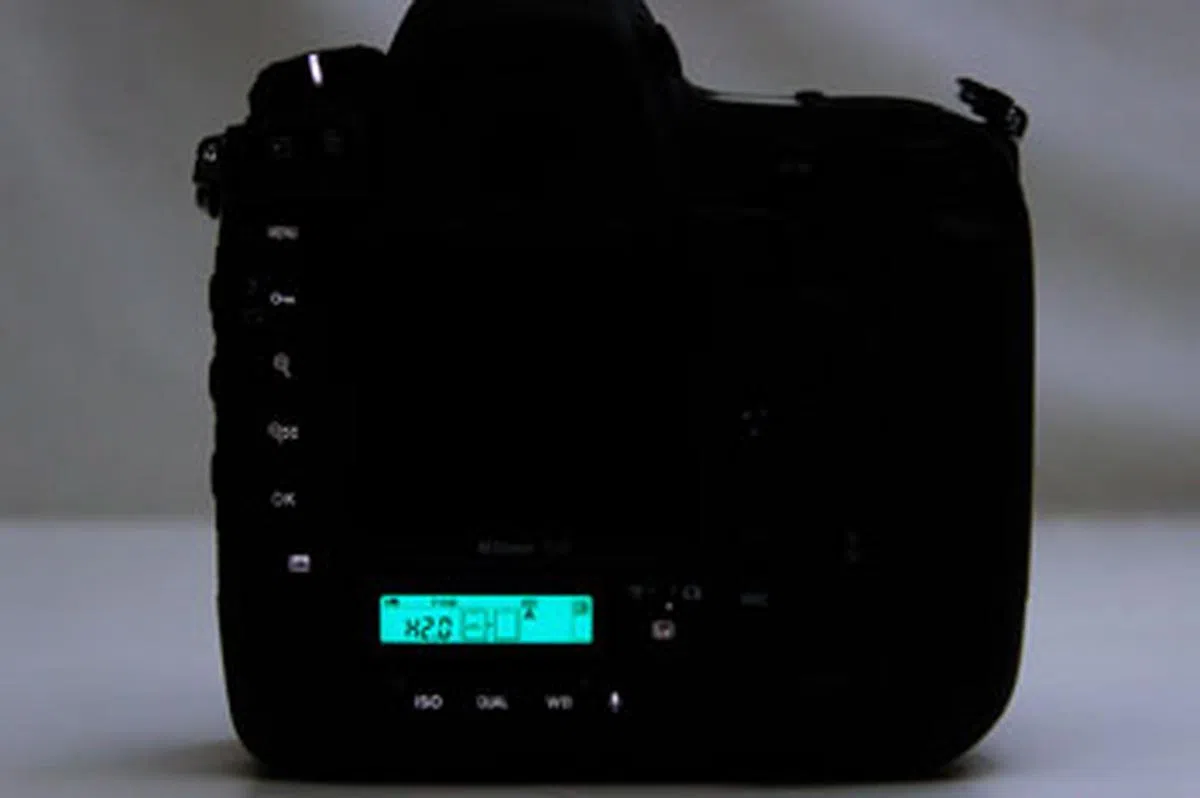 | 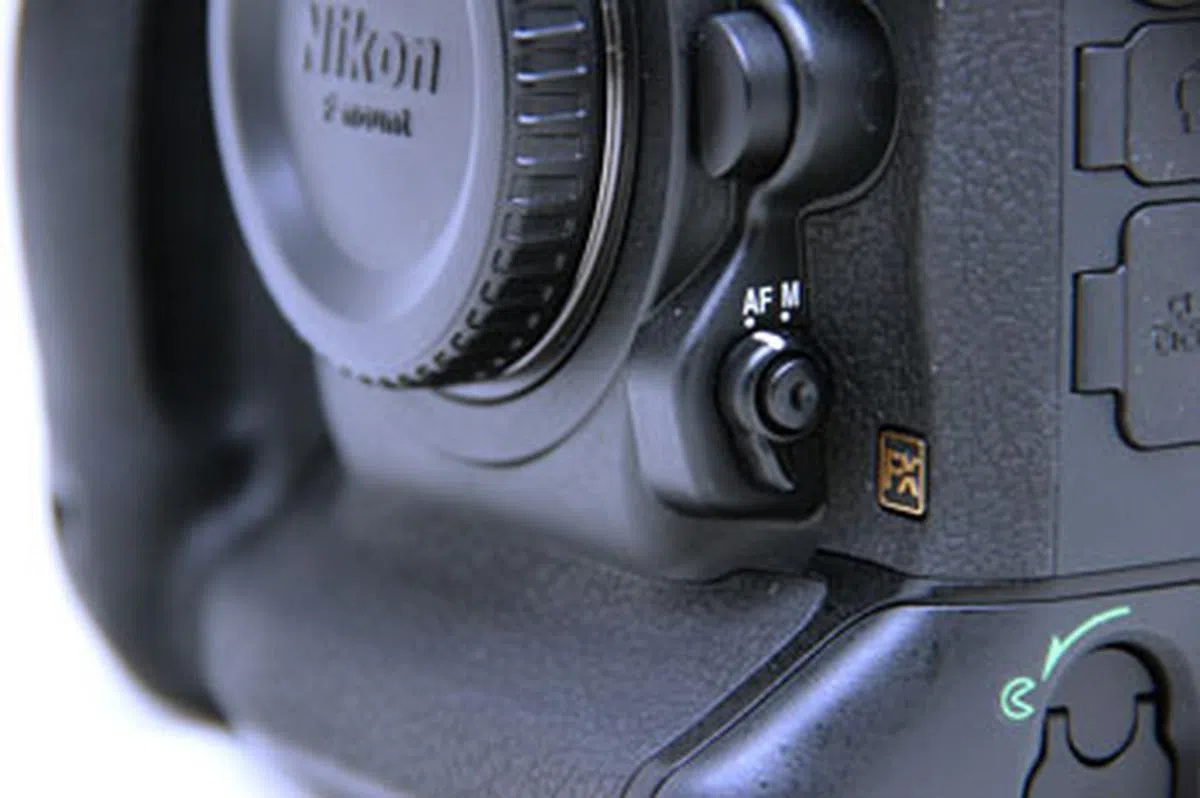 |
The port covers have undergone an interesting change: Instead of several ports covered by a single rubber cover, there are now four separate port covers for the six ports. Now you won't get a huge piece of rubber jangling over every exposed port while you're only using one or two. While seemingly a small thing, it shows that Nikon paid attention to the details while designing the D4.
Speaking of ports, the D4 gains a headphone jack to monitor sound levels, and a gigabit LAN port to connect the camera to a network. The LAN port is compatible with the new WT-5 wireless transmitter optional accessory, which can create a wireless network on which to share images from the D4 and establish remote control of the D4 via an Internet browser. This means you can gain (limited) control over the D4 using any computer with a browser, including tablets.

The D4 (right) gains individual port covers instead of sharing two large covers like on the D3S (left).

The most noticeable change on the D4 (right) is the new video Record button beneath the shutter release.
The top plate has also undergone a few welcome changes. The front-facing part of the release mode dial is now covered, making the camera look cleaner and less cluttered. While that might mean less of the mode dial to grip, we find that it doesn't degrade the user experience in any way.
The D4 gains a new dedicated video Record button, to the right and back of the shutter release button. It's smaller and sharper in feel than the Mode and Exposure Compensation buttons which share the top right of the D4, making it easier to distinguish. Should you accidentally press it while shooting stills, nothing will happen – it will only start movie recording if the D4 is in video mode and in Live View. The Record button can also be customized to trigger a limited selection of commands, like ISO sensitivity, in stills mode.

The D4 (right) sees the addition of two joystick sub-selectors.
The back of the camera sees the most changes. The D4 has two joysticks on the back of the camera, which add as new sub-selectors. Just like on high-end Canon DSLR cameras, the joysticks are used for AF point selection, similar in function to the bigger d-pad, so you can use either to shift the AF point. The joystick also serves as a focus lock – once focus has been achieved with a halfway press of the shutter, pressing the joystick down will lock focus. Whether you use the d-pad or the joystick will be a matter of preference, but as reviewers who have used both Nikon and Canon cameras, we quite like using a joystick to move the AF point, as we find it easier to shift than the larger d-pad.
While some long-time Nikon users might not like the joystick situated above the d-pad, we think they'll welcome the one found lower on the body for use in portrait mode. While holding the camera vertically, you no longer have to reach for the d-pad, as the second joystick is easily in reach of your shooting hand's thumb, helping you shift AF points easily. A thumb-rest on the bottom of the camera makes holding the D4 in portrait mode much more comfortable, and there's an additional Fn button to the back of the vertical shutter release. The only gripes we have with the vertical grip are that the Fn button is rather small, and the front command dial is quite stiff.
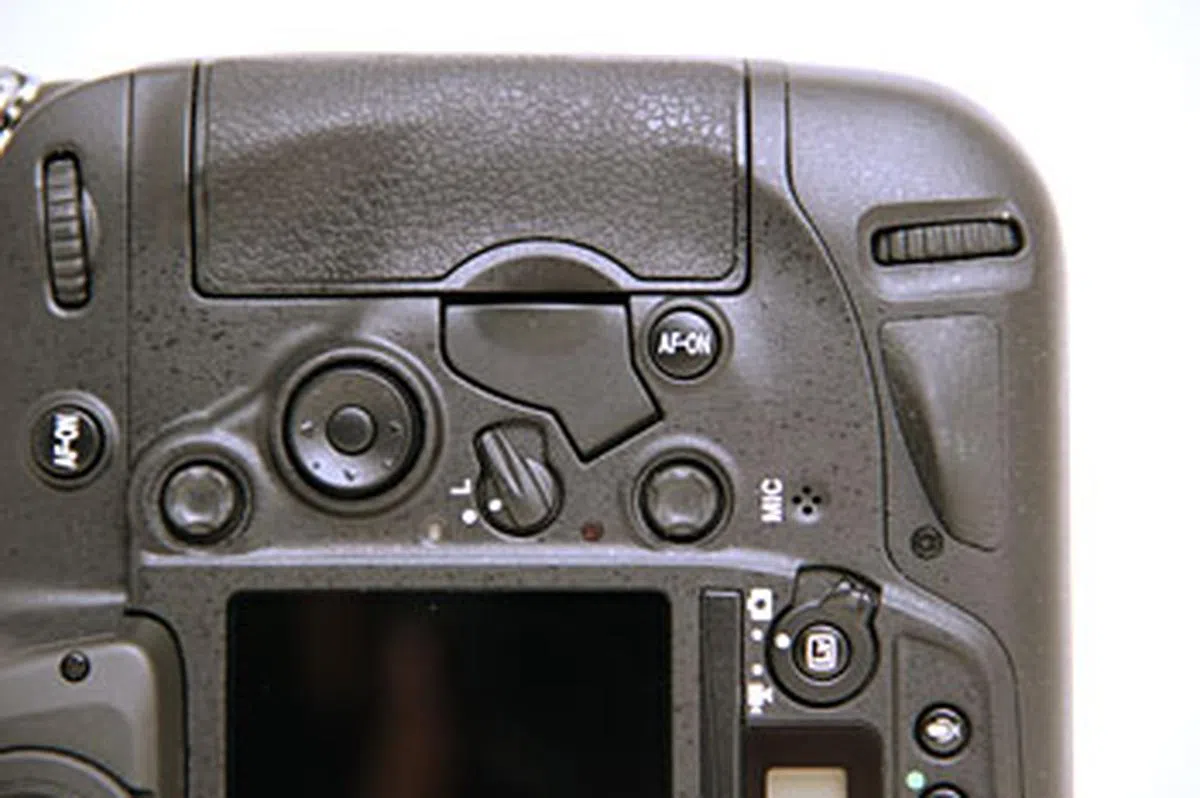 | 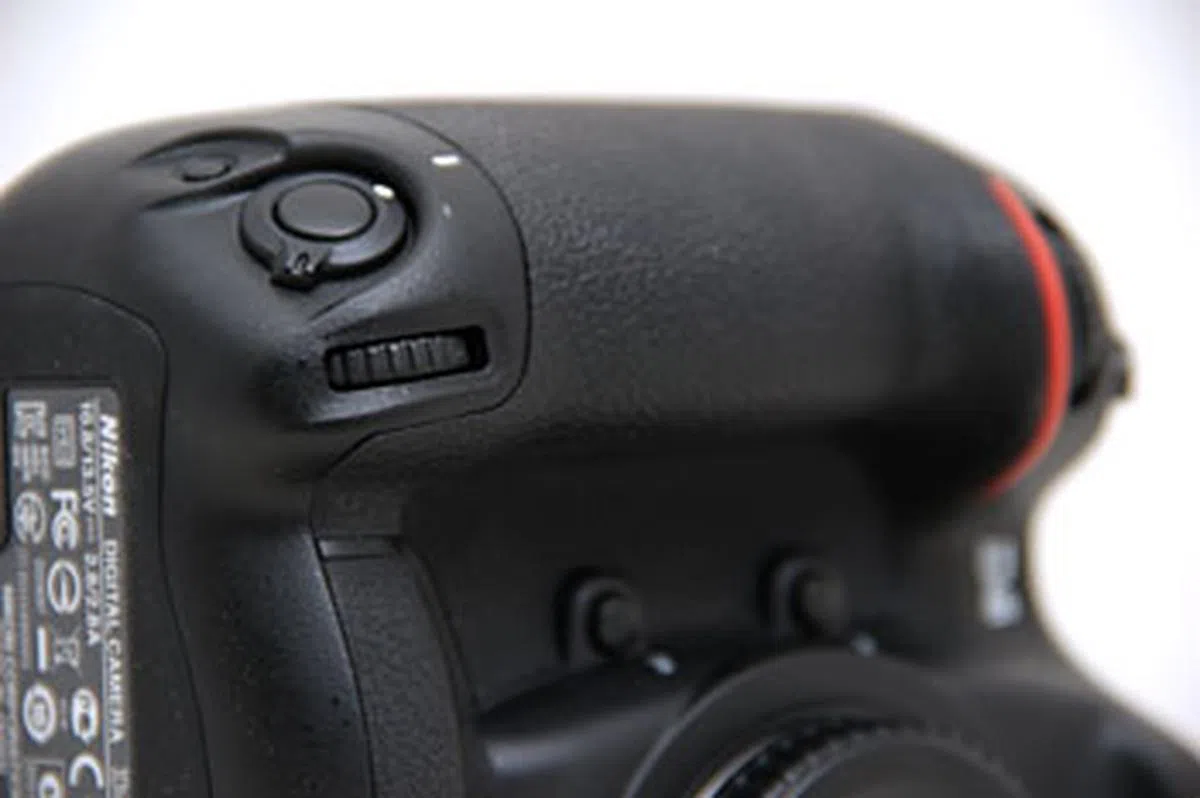 |
Instead of two ConpactFlash card slots, the D4 has one CF and one XQD memory card slot. While XQD cards are smaller and have read/write speeds faster than CF cards, Sony is the only company producing them at the moment. SanDisk, Lexar and Kingston have publicly announced that they have no plans to make XQD cards at this time, making Nikon's decision to include it in the D4 look premature. As it is, it forces professionals to switch from an existing inventory of memory cards to a new standard if they wish to make the full use of the D4's dual card slots.

Even though XQD offer faster transfer speeds and are smaller than CF cards, Sony is the only company making them at the moment, making the D4 a very early adopter.
Due to new battery regulations in Japan, the D4 comes with a new battery model, which is different from the one found on the D3S. Nikon says it performs better than previous batteries at low temperatures and is rated for 2600 shots per charge according to the CIPA standards (the D3S' battery was rated for 4200 shots).
Design & Handling - Auto-focus
The D4 comes with two auto-focus modes and four AF-area modes. They’re switched by pressing the unmarked central button on the focus-mode selector level besides the lens and turning the command dial. Because the changes will be reflected in the viewfinder, photographers can now change AF modes without taking their eyes off the scene.
AF-S (Single) is best for stationary subjects, the focus locks when the shutter button is pressed halfway. AF-C (Continuous) is best for moving subjects; the camera will focus continuously as long as the shutter button is pressed halfway.
The four AF-area modes are Single-point AF, Dynamic-area AF, 3D-tracking mode and Auto-area AF mode. Single-point AF is best for precision focusing on still subjects. Dynamic-area AF lets you choose from nine, 21 or 51 AF points. The selected AF point and its surrounding points will cover the wide, specified area to limit focus to. 3D-tracking AF maintains tracking of subjects by automatically shifting focus according to the subjects’ movement. It can also compensate for the camera’s movement, making it an ideal AF-area mode for users who like to center focus and recompose; the D4 will shift the AF point automatically to ‘track’ where you focused on. Auto-area AF uses all focus points to focus automatically.
We found the D4's auto-focus to be highly dependable, focusing quickly and accurately in almost every situation we threw at it, from stationary subjects in bright daylight to fast moving subjects in low-light. While Nikon says the new AF system should put priority on faces, we found that the camera's AF will, in some situations, place priority on near subjects over further subjects with recognizable faces. The D4's ability to track faces is more obvious in Live View, where a focus box will appear over a subject's face.
Design & Handling - Live View
Unlike the Canon EOS 5D Mark III which we reviewed recently, the D4 doesn’t clutter up Live View with unnecessary info. Unlike the Mark III however, while you can monitor and change audio levels before recording, you cannot change audio levels after you hit record.

The Live View screen is free of information clutter.

f/2.8 at 140mm, 1/4000 sec, ISO25,600.
Image Performance
Images straight out of the D4 are just as we expected: Clean, crisp with vibrant color and good skin tones. Besides a little recovery and heightened contrast, there is little need to tweak the images, which is good news for sports photographers who need to transmit quickly.
Clarity scores a high 2400 LPH horizontal by 2200 LPH vertical on our resolution charts. The D4 gains a slightly higher megapixel count at 16MP compared to the D3S' 12MP, which should give photographers more room to crop. If 16MP was the best balance that could be found between high frame-rates and ISO performance, it's a good enough resolution that we think most users can live with.
Images from ISO100 to ISO3200 are very clean, in fact it's at ISO3200 where we first see any noticeable noise in the dark areas, and most should be quite comfortable shooting up to ISO6400 and reaching up to ISO12,800 at times. It's certainly quite possible to shoot from there upwards, and depending on your output resolution and how heavily you're willing to work noise reduction, the D4 can shoot up to ridiculously high ISO levels. We'd go so far as to say that in certain situations, it's possible to shoot up to as high as ISO51,200 (Hi2 in the expandable range) if you're willing to do some noise reduction in post.
Not everyone will need to shoot at such a high ISO setting, but we've found it to be a lifesaver in dim sporting situations where a fast shutter speed was essential. It's also useful when you absolutely need to shoot in dark situations, this is literally a camera that can see in the dark: It's amazing how the D4 can make some night shots look like day, seeing details even your eye can't see. Like we mentioned before, the D4's auto-focus performs admirably, it's able to focus fast and accurately before and in-between the fast 10 frames-per-second shots. But we're not sure if Nikon's claim that the new AF system can focus on faces holds true, as we've experienced the D4 preferring near subjects compared to faces in over-the-shoulder type shots.
We found that video also benefits from the high ISO capability of the D4, and depending on your output, it's quite possible to shoot at high ISO settings, which means more natural light and less need for additional lights. Our video production team shot this interview of British shoe designer Charlotte Dellal entirely on a D4:
There's a limit to how far the D4's ISO sensitivities can go though. ISO102,400 and ISO204,800, while remarkable for their ability to grab details in very dark places, are so noisy as to be unusable. While we didn't have a D3S to test the D4 against, both Fstoppers and Mansurovs Photography have done so and found that while the D4 doesn't seem to have significantly cleaner images at high ISO settings, it's still a hair better. DxOMark has found that the D4 offers higher dynamic range than the D3S, easily one stop difference at low ISO settings.

The D4's fast 10 fps shooting speed lets you capture fast-moving action without worry. f/5.6 at 120mm, 1/500 sec, ISO400.

Shooting at ISO6400 looks relatively clean. f/5.6 at 130mm, 1/500 sec, ISO6400.

Depending on your output needs, it's quite possible to shoot up to ISO12,800 and beyond. f/4 at 70mm, 1/200 sec, ISO12,800.

This was photographed near 8PM at night, but you wouldn't know it from how bright the D4 makes the scene. f/2.8 at 200mm, 1/125 sec, ISO11,400.

In low-light and at high ISO settings, the D4 still renders skin tones well. f/2.8 at 200mm, 1/1000 sec, ISO10,000.

While it's remarkable how the D4 can see into the dark, the highest two ISO settings are so noisy as to be unusable. f/4 at 122mm, 1/125 sec, ISO204,800.
Sample Photographs
These are sample photographs shot with the Nikon D4. The photos have not been post-processed and are copyright to SPH Magazines. They are provided for your reference only and we ask that you do not reproduce them elsewhere. Click for the full-resolution images.

f/10 at 56mm, 1/400 sec, ISO800.

f/4 at 200mm, 1/1000 sec, ISO800.

f/2.8 at 70mm, 1/640 sec, ISO1600.

f/4 at 200mm, 1/500 sec, ISO2000.

f/5.6 at 98mm, 1/500 sec, ISO5000.

f/5.6 at 200mm, 1/500 sec, ISO9000.

f/5.6 at 24mm, 1/15 sec, ISO6400.

f/2.8 at 70mm, 1/4000 sec, ISO51,200.

Conclusion
The Nikon D4 is a high-performance, high-precision tool which is quite obviously not for everyone. Along with its amazing high ISO low noise sensitivity, fast frames per second shooting rate and smooth handing, the D4 also comes with a monster size and a staggering price tag (S$9799, body only). While it's so good that it can shoot anything, anywhere, it would be sheer overkill for anyone who doesn't need its fast frame rates and high ISO settings. Case in point: Landscape photographers who shoot single frames at low ISO levels would be better off with the higher resolution D800, while street photographers might want something more discreet.
But if you need a camera which can shoot fast in low-light, then the D4 currently represents the best-in-class from Nikon. For owners of the D3 and lower-end cameras, the D4 represents a substantial performance upgrade. For D3S owners however, the D4 may not be an immediately obvious upgrade. It offers slightly cleaner images at high ISO settings, and higher dynamic range. Handling is significantly improved, especially in portrait mode. The D4 now shoots Full-HD and is better equipped for video, but if you need a HD DSLR you can also look at the D800, which also shoots Full-HD and costs nearly half the price at S$4488.
Nikon D4 vs. the World
The comparison in everybody's mind must be the D4 versus Canon's flagship 1D X which is due sometime in April/May. On paper, the specs certainly look enticing:
Nikon D4 | Canon 1D X | |
Effective Megapixels | 16.2MP | 18.1MP |
ISO Sensitivity (Native) | 100-12,800 | 100-51,200 |
ISO Sensitivity (Expandable) | 50-204,800 | 50-204,800 |
AF Points | 51 | 61 |
Cross-Type AF Points | 15 | 41 |
Max. Aperture with AF | f/8 | f/5.6 |
Max. Frame Rate | 10 fps, 11 with AF locked on first frame | 14 fps (high-speed mode), 12 fps (RAW) |
Video Resolution | 1080p: 24/25/30fps, 720p: 60fps | 1080p: 24/25/30fps, 720p: 60fps |
Video Format | h.264 with B-frame compression | h.264 with either IPB or ALL-I compression |
Memory Slots | 1 x CF card, 1 X XQD card | 2 x CF cards |
Price | S$9799 | US$6799 |
The Canon 1D X looks like it has a leg up in nearly every aspect, from a faster frame-rate to a larger resolution with equivalent ISO range. The D4, however, does offer an advantage for photographers shooting with extenders, you would need to focus manually when using a 400mm f/4 lens with a 2x tele-extender on a 1D X, while the D4 can still auto-focus with the same set-up. And the 1D X costs more than the D4, while the US pricing for the 1D X converts to approximately S$8550 today, you should know that the D4 is retailing for less than the 1D X in the US with a price of US$6000. So while the 1D X's local price hasn't been announced, expect to pay more than the D4's S$9799 for the camera.
Still, cameras aren't just about the specs, so we're not ready to call a winner between the two cameras until we've tested the 1D X. At the same time, it's quite unlikely that anyone operating at this level will change entire systems based on a single camera, and we're sure that each camera will be a serious performer in its own right, so to each professional his own.

But the 1D X isn't Nikon's only competitor. With the release of the four frames per second, 36MP D800, Nikon has no new, full-frame, alternative sports body to offer its users. Canon however, has the six frames per second, 22MP 5D Mark III, which is nearly half the price of a D4 at S$4699. While the previous generation D700 nearly matches the 5D Mark III's frame-rate at five frames per second, and can shoot up to eight frames with the use of the optional MB-D10 Multi-power Battery Pack, it comes with a 12MP previous generation sensor. The D800 can actually reach up to six frames per second using the optional MB-D12 Multi Power Battery Pack, but only at DX, not FX resolution.
While the D700 is still a good camera, we can't help but feel that Nikon has given the landscape and studio photographers a boon with the D800, while forcing action photographers to go with the high-end D4 or previous generation D700. It will be interesting to see if Nikon will address this gap (or even sees this as a gap) in their product line, as they've indicated that the D4 and the D800 will not be the last DSLR cameras to be announced in 2012.
Our articles may contain affiliate links. If you buy through these links, we may earn a small commission.
